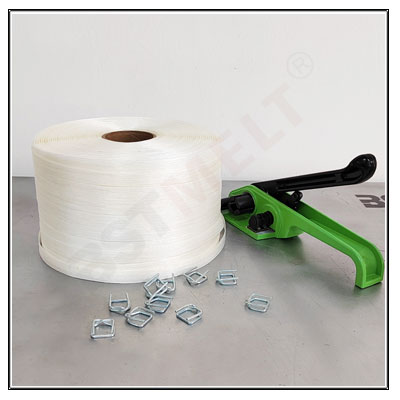Bonded strapping has become an indispensable tool for ensuring fast and reliable packaging of goods, particularly in industries where speed and safety are paramount. This innovative packaging solution has gained popularity due to its unmatched durability, ease of use, and resistance to various climatic conditions. In this article, we delve into the world of bonded strapping, exploring its numerous benefits and applications across different sectors.


Bonded strapping, also known as synthetic strapping, is a type of packaging material made from polypropylene, a thermoplastic polymer. Unlike traditional steel strapping, bonded strapping is more lightweight, flexible, and resistant to corrosion, making it an ideal choice for industries that require a high degree of flexibility and durability. Furthermore, bonded strapping is easier to use and handle, reducing the risk of injuries and increasing productivity in packaging processes.
One of the key advantages of bonded strapping is its resistance to outdoor storage under various climatic conditions. From extreme heat to freezing temperatures, bonded strapping remains intact and secure, ensuring the safety and integrity of the packaged goods. This makes it an ideal packaging solution for industries that ship products across the globe, where goods may be exposed to diverse climatic conditions during transportation.
Another significant benefit of bonded strapping is its sustainability. As a recyclable and biodegradable material, bonded strapping is environmentally friendly, reducing the carbon footprint of packaging processes. This aligns with the growing global trend towards sustainable packaging solutions, making bonded strapping an attractive choice for companies looking to minimize their environmental impact.
Bonded strapping has found widespread application across various industries, including logistics, construction, and manufacturing. In the logistics sector, bonded strapping is used to securely package goods for shipment, ensuring that they arrive at their destination safely and intact. In the construction industry, bonded strapping is used to bundle building materials, such as pipes and rebars, enhancing their durability and ease of handling on construction sites. In manufacturing, bonded strapping is used to securely package finished products, ensuring their safe transportation and storage.
Despite its numerous advantages, bonded strapping does have some limitations. For instance, it may not be suitable for heavy-duty applications that require extreme tensile strength, as steel strapping may provide better performance in such cases. However, for the majority of packaging applications, bonded strapping offers a cost-effective, versatile, and sustainable solution that meets the needs of businesses across various industries.
In conclusion, bonded strapping has emerged as a game-changer in the world of packaging, offering a fast, reliable, and sustainable solution for securing goods during transportation and storage. As the demand for efficient and environmentally friendly packaging solutions continues to grow, bonded strapping is set to play an increasingly important role in ensuring the safety and integrity of packaged goods across various industries.
By embracing innovative packaging solutions like bonded strapping, businesses can future-proof their operations, minimize their environmental impact, and ultimately deliver better value to their customers.

BSTSTRAP
No.30 building, Wuxing High-tech Venture Park
Huzhou City, Zhejiang Province,China
Whatsapp:+86 136 6574 4776
Monday to Saturday 9 am to 5 pm
hailey@bststrap.com
Send us your enquiry anytime



